Vous êtes ici : Accueil › “How “lucky” we are that the Fukushima nuclear accident occurred in early spring. Predictions on the contamination levels from various fission products released from the accident and updates on the risk assessment for solid and thyroid cancers”
“How “lucky” we are that the Fukushima nuclear accident occurred in early spring. Predictions on the contamination levels from various fission products released from the accident and updates on the risk assessment for solid and thyroid cancers”
Publication issue du projet RADIOCLIMFIRE
Abstract
The present paper studies how a random event (earthquake) and the subsequent disaster in Japan affect transport and deposition of fallout and the resulting health consequences. Therefore, except for the original accident in March 2011, three additional scenarios are assessed assuming that the same releases took place in winter 2010, summer 2011 and autumn 2011 in order to cover a full range of annual seasonality. This is also the first study where a large number of fission products released from the accident are used to assess health risks with the maximum possible efficiency. Xenon-133 and 137Cs are directly estimated within the model, whereas 15 other radionuclides are calculated indirectly using reported isotopic ratios. As much as 85% of the released 137Cs would be deposited in continental regions worldwide if the accident occurred in winter 2010, 22% in spring 2011 (when it actually happened), 55% in summer 2011 and 48% if it occurred during autumn 2011. Solid cancer incidents and mortalities from Fukushima are estimated to be between 160 and 880 and from 110 to 640 close to previous estimations. By adding thyroid cancers, the total number rises from 230 to 850 for incidents and from 120 to 650 for mortalities. Fatalities due to worker exposure and mandatory evacuation have been reported to be around 610 increasing total estimated mortalities to 730–1260. These estimates are 2.8 times higher than previously reported ones for radiocaesium and 131I and 16% higher than those reported based on radiocaesium only. Total expected fatalities from Fukushima are 32% lower than in the winter scenario, 5% that in the summer scenario and 30% lower than in the autumn scenario. Nevertheless, cancer fatalities are expected to be less than 5% of those from the tsunami (~ 20,000).
Evangeliou, N., Balkanski, Y., Cozic, A., Møller, A.P., 2014, The Science of the Total Environment, 500–501, 155–172.







